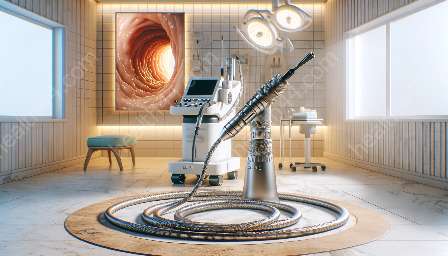Endoscopy is a crucial medical procedure that allows doctors to visualize and diagnose conditions within the human body. It involves the use of an endoscope, which is a flexible tube with a light and camera attached to it. Snares for endoscopy are an essential part of this process, aiding in the removal of abnormal tissues and foreign objects from the body. This article will explore the different types of snares used in endoscopy, their compatibility with endoscopes, and their significance in the field of medical devices and equipment.
The Function of Snares for Endoscopy
Snares for endoscopy are specialized tools designed to capture and remove abnormal tissues, polyps, or foreign bodies from the body's internal organs, such as the digestive tract. These snares are commonly used during therapeutic endoscopic procedures, where the goal is to remove or biopsy abnormal tissues found during the examination.
The function of a snare is to loop around the target tissue or foreign body, and securely grasp it for removal. The looped design of the snare allows for precise and controlled application, minimizing trauma to the surrounding tissue and reducing the risk of bleeding or other complications.
Types of Snares
There are several types of snares for endoscopy, each designed for specific purposes and anatomical locations within the body. The most common types include:
- Polypectomy Snares: These snares are used for the removal of polyps, small protruding growths that can develop in the colon, stomach, or other parts of the digestive tract. The looped design of these snares allows for precise removal of the polyp while minimizing the risk of damage to the surrounding tissue.
- Foreign Body Removal Snares: These snares are specifically designed to retrieve foreign objects that may have been swallowed and become lodged in the digestive tract. The flexible and controlled nature of these snares allows for safe and effective removal of foreign bodies without causing additional trauma.
Compatibility with Endoscopes
Snares for endoscopy are designed to be compatible with endoscopes, which are the primary visualization tool used during these procedures. Endoscopes are inserted into the body through natural openings or small incisions, allowing doctors to view the internal organs in real-time. The snares are inserted alongside the endoscope and manipulated by the physician to perform targeted tissue removal or foreign body retrieval.
Compatibility with endoscopes is crucial for the effective and safe use of snares during endoscopic procedures. The snares need to be designed in a way that allows for smooth insertion and manipulation alongside the endoscope, ensuring precise and controlled application during tissue removal or foreign body retrieval.
Significance in Medical Devices & Equipment
Snares for endoscopy are a significant component of medical devices and equipment used in endoscopic procedures. Their role in tissue removal and foreign body retrieval is crucial for the successful completion of therapeutic endoscopies, which are often used to treat conditions such as gastrointestinal bleeding, polyps, and tumors.
These snares are crafted with high-quality materials and undergo rigorous testing to ensure their safety and effectiveness during medical procedures. Their significance in the field of medical devices and equipment lies in their ability to provide minimally invasive solutions for treating a wide range of gastrointestinal conditions, ultimately improving patient outcomes and reducing the need for more invasive surgical interventions.
Conclusion
Snares for endoscopy play a vital role in the field of medical devices and equipment, offering safe and effective solutions for tissue removal and foreign body retrieval during endoscopic procedures. Understanding the function, types, and compatibility of these snares with endoscopes is essential for medical professionals and patients alike, as it contributes to the successful completion of therapeutic endoscopies and improved patient outcomes.


